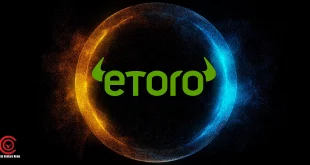Distributed ledger technology (DLT) and blockchain are bringing disintermediation to nearly all sectors from the financial service to all others like education, healthcare, telecommunications, and many more. In practice, the blockchain technology provides a new way to trade, share, invest that including property assets, cash, or even intellectual property, in a transparent, secure, and effective way.
What Is A Distributed Ledger?
Distributed ledgers are the databases shared throughout a network and spread over varied geographical locations. A ledger is a collection of financial databases and, in such a case, distributed implies spread out and controlled across the globe. Thus, this technology is held and reorganized by several parties in varied institutions and locations.
This can be availed by the participants at every network node; the participants can receive an identical copy of the recordings that are shared across the network. In case the ledger is appended or edited, the alterations are copied and replicated to the participants. In order to ensure that the database is precise, it is synchronized. Bitcoin and distributed ledgers use the same technology.
How Distributed Ledgers Technology Work?
Distributed ledgers are reorganized, held, and controlled by individuals known as nodes. The database is built independently by every node. Every transaction happening on the network is processed, and a verdict on the development of the database is formed by each node.
Based on each transaction, voting is carried out on the alterations completed on the database. All nodes take part in the voting, and if at least 51 percent of them agree, the latest transaction is accepted on the database. Later, the nodes update the versions of the database so that all the nodes or devices will be of the same version. The latest transaction is written onto a block on the blockchain.
Nodes in PoW (Proof-of-Work) blockchain are also known as miners. When a miner successfully keeps a new transaction into a block, they get a reward. It needs a dedicated 24×7 computer power. It is the duty of miners to compute the cryptographic hash for the latest blocks. Whoever, among the miners, finds the hash first and successfully, receives the reward.
Miners offering more computational power to find the hash will be more successful. However, as blocks keep generating, it becomes harder to find subsequent hash scales. The aim is to keep a continuous speed of generating the blocks.
Advantages Of Distributed Ledger
DLT carries a great ability to revolutionize the way institutions, governments, and corporations operate. It can help governments in collecting taxes, issuing passports, and recording land registries, licenses, and the outlay of Social Security advantages, along with voting procedures. With that let us have a look at the advantages of DLT.
Highly transparent, secure, tamper-proof, and immutable
In distributed ledger technology, the entries occur in the database without the involvement of any third party. After records are inserted into these ledgers, they cannot be changed by any other party. Hence, until the ledgers are distributed, all the records cannot be tampered with.
The need for a third party is eliminated
Even though it is not important to always function on these ledgers without an intermediary, it can save a lot of money and also a time in some scenarios. In the supply chain business, outcomes can be written directly by sensors to the blockchain without the requirement for a third party. It saves a good amount of effort, money, and time.
Inherently decentralized
The inherently decentralized nature of this technology adds another layer of security. As the database is spread across the globe, it is hard to attack.
Highly transparent
These ledgers arrive with a high amount of transparency. They enable all the stored data to be freely and easily viewable. It offers a prominent amount of transparency desired by many industries.
Examples Of DLT (DLT)
With that let us end this guide with a few examples that will help you to understand this technology better.
- BTC (Bitcoin) is a highly famous example of a ledger. It is a digital currency that can be utilized for payments on a network that allows users to make non-reversible payments along with transaction fees that are less than conventional online payment methods.
- Ethereum is another famous DLT that allows the developers to formulate their own applications. It is very famous as it introduced smart contracts. The smart contracts are self-executing and are boosted if certain pre-set, real-world scenarios are fulfilled, and related data is inserted into the blockchain.
- Ripple is another instance of a ledger that is an open-source ledger aiming at payments, mainly cross-border transactions. It was primarily intended for banks.
The Bottom Line
A distributed ledger is a database that is shared and synchronized throughout several institutions, sites, or geographies, available by multiple people. It enables transactions to have public “witnesses.” The users at each node of the network can avail of the recordings shared throughout that network and can also own an identical copy of it. Any alterations or additions that are made to the ledger are copied or reflected to all participants in a matter of minutes or seconds.
Frequently Asked Questions
1. What is the difference between blockchain and distributed ledger?
The most significant difference to know between distributed ledger vs blockchain is that blockchain is just one form of the ledger. Even though blockchain is a series of blocks, these ledgers do not need such a chain. Along with that, these ledgers do not require proof of work and provide theoretically better scaling choices.
2. What are distributed ledgers used for?
In a DLT, every node processes and authenticates every item, thereby creating a record of each item and formulating a consensus on its veracity. The working of distributed ledger can be referred to as record static data, like a registry, and dynamic data, like financial transactions.
3. Who invented distributed ledger?
In 2008, the popularly anonymous innovator famous by pseudonym Satoshi Nakamoto introduced a P2P (peer-to-peer) version of electronic cash that enables direct online transactions among two parties without an intermediary.
- The Bitcoin Wallet Boom: Why Demand Is Skyrocketing - 25/11/2023
- How To Choose The Best Crypto Exchange Affiliate Programs - 03/03/2023
- Crypto License: How To Get It Now? - 03/02/2023
 Crypto Venture News One stop Crypto Track Down
Crypto Venture News One stop Crypto Track Down 






